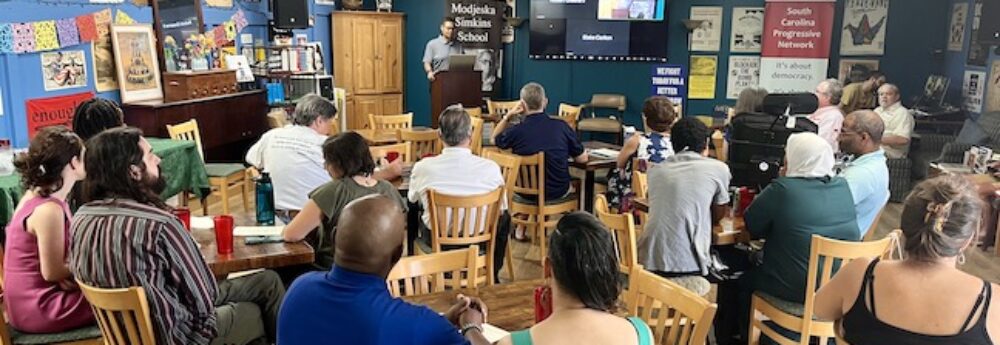By Susan Shaer
Executive Director of Women’s Action for New Directions
A flu pandemic is nasty, brutish, and a global danger. All U.S. Senators and other leaders agree, and leap to keep everyone safe and healthy.
Another nasty, brutish and global danger, which additionally is outrageously expensive and out of synch with today’s defense needs, is the continued maintenance of our huge stockpiles of nuclear weapons. All our senators should agree on this.
However, since there are threats and plotters, the U.S. needs to have a strong and effective defense.
In his speech at the Nobel Peace Prize ceremony, President Obama acknowledged these threats; and he also reiterated his call for a world free of nuclear weapons. As he has noted, they pose too much risk to all of us, as humans sharing a single planet. The longer nuclear weapons lurk, and grow, the graver the danger that they could fall into the wrong hands.
So how do we proceed toward the goal of liberating the world from the threat that nuclear weapons pose? The answer is simple: Step by step. The road to disarmament is, necessarily and rightly, long, and will take time and patience, and many steps that guarantee our safety and prevent any cracks in our security.
One of the first steps is to take stock of the existing nuclear arsenals – and then reduce the number. The reality is that it is possible, and it’s in the works. President Obama and President Medvedev committed to this goal months ago; and will soon sign onto a new START agreement (Strategic Arms Reduction Treaty) that pledges and ensures the U.S. and Russia will chip away at their huge stockpiles.
The fact is that the U.S. and Russia still hold onto around 95 percent of the world’s roughly 23,000 nuclear weapons. When the Cold War was drawing to a close, both countries acknowledged the urgent need to reduce these stockpiles, and signed onto START I. It was the largest and most complex arms control treaty in history.
Since that treaty expired on Dec. 5 of this year, the U.S. and Russia have been working to fashion a new treaty acceptable to both. A critical piece is a reliable system to provide an accurate assessment of the size and location of each country’s nuclear forces. The new treaty will reduce the strategic deployed arsenals of each country by about one quarter (to a ceiling of 1,675 within seven years).
After the treaty is finalized, it heads to the U.S. Senate for consideration– first in committee hearings, and then on the floor. There will be ample time for debate. There are many reasons for the Senate to ratify this treaty, and to do so with deliberate speed.
We have more than enough nuclear weapons to provide a strong defense; and to destroy life on the planet. We need to begin the long process of dismantling some of the thousands before they slip into the wrong hands.
Maintaining these many thousands is enormously, and wastefully, expensive.
We have better information than ever about Russia’s situation, and so are assured they are acting in accordance with the treaty. We should cultivate a positive relationship with Russia, particularly today.
The world is waiting for its leaders to choose a sane path to help keep from destroying the planet.
At least 67 Senators must vote to ratify START. This is a considerable number. And yet, really, it should have the support of all 100. START is in the interests of the U.S., it makes us safer, and ideally, it helps to build momentum toward the ultimate goal of a safer world without nuclear weapons.
This piece was provided by the American Forum, a nonprofit, nonpartisan, educational organization which provides the media with the views of state experts on major public concerns in order to stimulate informed discussion.

START is in the interest of the U.S. and also of the world. Why do we need weapons capable of destroying the world? Let us divert our attention to beginning to save the world by getting rid of nuclear weapons through a new START treaty.